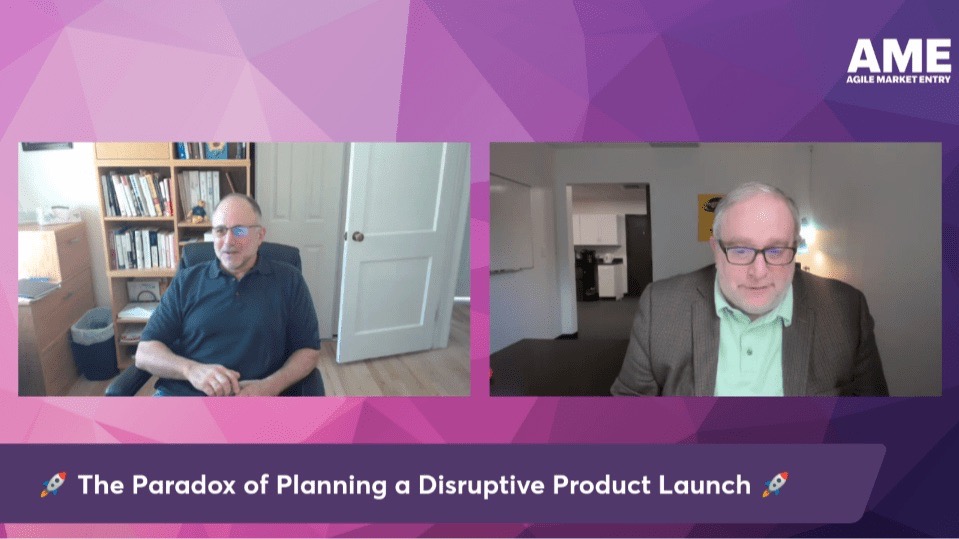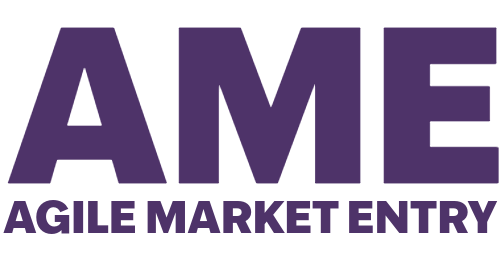
In the dynamic world of medtech startups, where the only constant is change, understanding the nuances of launching a disruptive product is crucial. In a recent LinkedIn Live event on April 25, 2024, Chris Morrison, founder of ViaVerus and creator of the Agile Market Entry sales framework, explored this complex topic alongside marketing consultant and analyst, David Mantica. Together the two took an in-depth look into the 5 steps to planning a disruptive product launch, Here’s a recap.
The Paradox of Disruptive Product Planning
Traditional product launch strategies often fall short when applied to disruptive technologies. Disruptive products, by their nature, challenge existing market norms and customer behaviors, necessitating a unique approach to market entry.

During the event, Chris highlighted a fundamental misunderstanding often seen in traditional launch planning: the assumption that everything can be planned in advance. In reality, launching a disruptive product is more about discovery than execution. “It’s not that you can’t plan a disruptive product launch,” Chris explained, “it’s just that traditional planning doesn’t work because much of your launch will be based on assumptions.”
Embracing the Cynefin Framework
To address the complexity of disruptive product launches, Chris recommends adopting the Cynefin decision-making framework. This model helps differentiate between ‘complicated’ and ‘complex’ scenarios. For a disruptive product, the market dynamics are not just complicated; they are inherently complex, requiring adaptive and iterative planning processes.
“Every disruptive product launch is a discovery process. You’re continuously learning what works and what doesn’t,” Chris noted. This approach aligns closely with agile methodologies where the focus is on iterative development and responsive planning.

5 Steps for Launching a New Product
When launching a disruptive product in MedTech, there are five steps to be taken: It is critical to understand that each step is sequential, building off the previous step. This is the nature of the Cynefin complex decision-making state and why traditional product launch planning does not work for disruptive products.
- Identifying the Beachhead Market: The initial step involves pinpointing your early adopters and the specific problems they need solved—often referred to as the ‘market entry point’ or MEP. Understanding who your early adopters are, and the issues they face, is crucial before any messaging or broad market strategies can be developed.
- Establishing Market Messaging: Once the early adopter and their needs are identified, the next step is crafting tailored messages that resonate. This is where ‘language market fit’ (LMF) becomes essential. Chris underscored the importance of this fit, stating, “You can’t design effective marketing messages until you nail the market entry point.”
- Developing Lead Generation Tactics: With a clear understanding of the market and established messaging, the focus shifts to lead generation. “This is not about executing predetermined tactics,” Chris elaborated, “but about testing various approaches to see what truly resonates with your target audience.”
- Sales Process and Cycle: After identifying what messaging and tactics are effective, the next step involves defining a detailed sales process that can be replicated. This step ensures that the sales cycle is understood and manageable.
- Adoption and Normalization: The final step revolves around ensuring that the product is not only delivered but also integrated into the customer’s daily operations, becoming the ‘new normal.’ This process is vital for long-term customer retention and satisfaction.
These are very broad strokes of developing a successful product launch and repeatable sales process (RSP). Chris mentioned that the ultimate success lives in the details and nuance of every disruptive product launch.
Planning for the Unpredictable
One of the key takeaways from the discussion was the importance of flexibility in the planning process. Chris pointed out that “planning for a disruptive product launch is about planning to be adaptive, not just executing a fixed plan.”
A poignant example provided during the session involved a medtech startup that had to accelerate its launch strategy due to unforeseen circumstances like the COVID-19 pandemic. This situation forced the company to adapt quickly, highlighting the necessity of being able to pivot and iterate on the go.
Conclusion: A Strategic Adaptive Approach
Chris wrapped up the session by emphasizing that while the path to launching a disruptive product can be fraught with challenges, a strategic, adaptive approach can markedly increase the chances of success. He reminded attendees that “the biggest mistake is not the failure to plan but failing to adapt the plan as you learn more about your market and product.”
In essence, planning a disruptive product launch isn’t just about following a set of steps; it’s about creating a flexible, responsive strategy that allows you to navigate the uncertainties of innovative markets. For those interested in diving deeper into this methodology, Chris’s “Sales Playbook for (Disruptive) Product Launch” on Agile Market Entry provides a comprehensive guide to mastering this process. Message Chris on Linkedin and request a copy of the “Playbook”.

